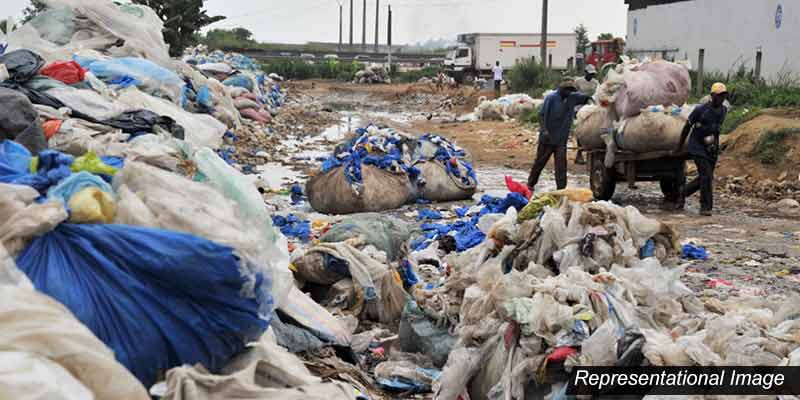- World
- Aug 16
Geneva talks on plastic pollution treaty adjourn without consensus
• Following 10 days of negotiations, Intergovernmental Negotiating Committee (INC) talks to develop an international legally binding instrument on plastic pollution adjourned on August 15 without consensus on a text of the instrument.
• The INC is tasked with developing an international legally binding instrument on plastic pollution, including in the marine environment, which could include both binding and voluntary approaches, based on a comprehensive approach that addresses the full life cycle of plastic.
• This resumed fifth session (INC-5.2) saw more than 2,600 participants gather at the Palais des Nations in Geneva, including over 1,400 Member delegates from 183 countries, and close to 1,000 Observers representing over 400 organisations.
• The Committee agreed to resume negotiations at a future date to be announced.
Intergovernmental Negotiating Committee
• In March 2022, at the resumed fifth session of the UN Environment Assembly (UNEA-5.2), a historic resolution was adopted to develop an international legally binding instrument on plastic pollution, including in the marine environment.
• The UNEA resolution requested the Executive Director of the UN Environment Programme (UNEP) to convene an Intergovernmental Negotiating Committee (INC) to develop “the instrument”, which is to be based on a comprehensive approach that addresses the full life cycle of plastic, including its production, design, and disposal.
• The INC began its work during the second half of 2022, with the ambition to complete the negotiations by the end of 2024. The first session of the INC (INC-1) took place in Punta del Este, Uruguay, from November 28 to December 2, 2022, followed by a second session (INC-2) from May 29 to June 2, 2023 in Paris.
• The third session (INC-3) was held from November 13 to 19, 2023 in Nairobi, followed by the fourth session (INC-4) from April 23 to 29, 2024 in Ottawa, Canada.
• The fifth session (INC-5) was held from November 25 to December 2, 2024 in Busan, Republic of Korea.
• The second part of the fifth session (INC-5.2) took place from August 5 to 15 at the Palais des Nations in Geneva, Switzerland.
• The goal of INC-5.2 was to agree on the instrument’s text and highlight unresolved issues requiring further preparatory work ahead of a diplomatic conference.
• A Chair’s Text from INC-5.1 in Busan served as the starting point for negotiations at INC-5.2, with the Chair releasing a Draft Text Proposal and a Revised Text Proposal over the course of the session. Despite intensive engagement, Members of the Committee were unable to reach consensus on the proposed texts.
Plastic pollution
• Plastic pollution is a global problem.
• Unlike other materials, plastic does not biodegrade. This pollution chokes marine wildlife, damages soil and poisons groundwater, and can cause serious health impacts.
• More than 400 million tonnes of plastic is produced every year worldwide, half of which is designed to be used only once. Of that, less than 10 per cent is recycled.
• An estimated 19-23 million tonnes end up in lakes, rivers and seas annually. That is approximately the weight of 2,200 Eiffel Towers all together.
• It is estimated that each person on the planet consumes more than 50,000 plastic particles per year, and many more if inhalation is considered.
• Microplastics are tiny pieces of plastic material typically smaller than five millimetres.
• From the deepest points of the ocean to the food and water we consume, microplastics are a growing threat to human and planetary health.
• These tiny plastic particles are present in everyday items, including cigarettes, clothing and cosmetics.
• Microplastics enter the ocean from marine plastic litter breaking down, run-off from plumbing, leakage from production facilities and other sources.
• When ingested by marine life such as birds, fish, mammals and plants, microplastics have both toxic and mechanical effects, leading to issues including reduced food intake, suffocation, behavioral changes and genetic alteration.
• In addition to entering the food chain through seafood, people can inhale microplastics from the air, ingest them from water and absorb them through the skin.
• Microplastics have been found in various human organs, and even in the placenta of newborn babies.


